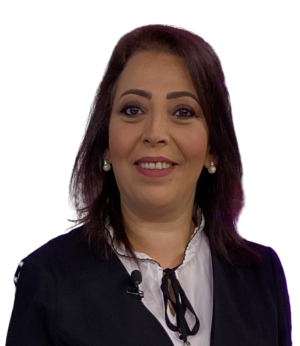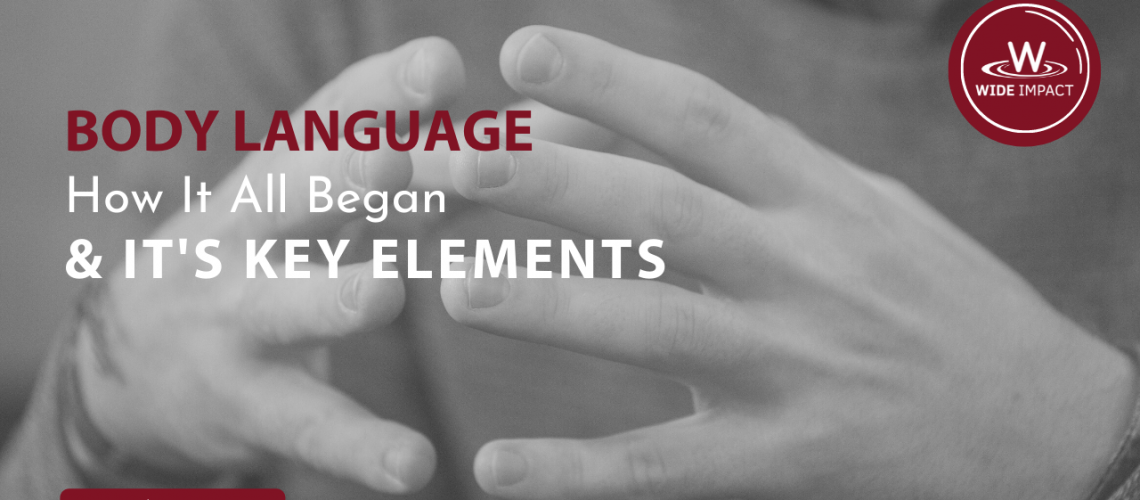
Some of us have heard that, “actions speak louder than words”. This couldn’t be more accurate, particularly when it comes to body language. We see it all the time—a person yawns or adjusts his tie or crosses his arms, and we immediately make a judgment about them.
Each of us is constantly sending and receiving signals and these signals play a subtle but significant part in how other people perceive us. Most people are consciously unaware of how their signals are perceived by others. They say one thing but do another. So what does this mean for you? If you want to get ahead in your professional life, you must learn how to control your body language.
Body language influences our life from the day we are born to the day we die. In fact, it dates back to the earliest of times, when people communicated via body language rather than verbal communication.
Body language has been used since prehistoric and even before language. After all, when humans didn’t know how to communicate vocally, They had to rely on nonverbal cues.
Certain signals are universal. Everyone in the world knows that smiling denotes enjoyment, contentment, or the desire to demonstrate that you intend no harm. Crying is used to express grief or suffering. How come these terms are so universal? How come we can communicate via body language? There are considerable cultural distinctions, yet there are many parallels as well. Despite ethnic variances in body form and color throughout the globe, people have a lot of similarities, which leads to comparable applications for body language. Why are we so similar? The solution may be found in key advancements and research conducted in the recent decade, particularly in “A troublesome Inheritance: Genes, Race and Human History” By Nicholas . (2007)
In 1952, anthropologist Ray Birdwhistell created the term “Body Language” to describe non-verbal communication. He filmed and analyzed people’s behavior to identify trends.
The publication of Julius Fast’s “Body Language” book( over 3 million copies sold) brought widespread attention to body language in 1970’s. He spoke about Kinesics (the interpretation of body movements and gestures regarded as a form of non-verbal communication), which resulted in the production of more research about Body language as well as more books about it. The surprising thing about this book was not only that it was widely read, but also that it pointed to key topics of body language in an exact clear and correct manner, this was the case despite the fact that the author had only ever been a writer and not a scientist or psychologist.
In fact, many who are knowledgeable in the subject of communication think that there is a law that states that 7% of the meaning of what a person is saying can be derived from their actual words. It’s interesting to note that 38% is dependent on the person’s tone of voice. The speaker’s nonverbal cues account for 55% of this meaning is communicated through the body language that we use (specifically our facial expressions). This 7-38-55 Communication model guideline was derived from studies done by Albert Mehrabian in the late 1960s and published at that time.
The thing about body language is an instinctive part of how we interact with the world, and it’s difficult to break out of that instinctual behavior without training.
In this article, we’re going to explore the four most important parts of body language: face, eyes, hands, and posture.
1. Face
People make up to 10,000 facial expressions every day. Some of these expressions are unconscious—we don’t know why we’re doing them or even that we’re doing them—but others are deliberate and intentional. These are the ones you want to pay attention to!
Your face is the portion of your body that conveys the most emotion. If you’re feeling anxious as you approach a room, your facial expression may give the impression that you are cold or hostile.
It is impossible for anybody to have any reservations about how approachable you are if you go around the room beaming smiles. When we smile, we come off as friendly, open, and self-assured.
Extra Note: Your facial expressions should match other’s, so if they smile, you smile back If they look worried, try to help them feel less anxious by showing empathy or offering reassurance.
2. Eyes
The eyes are the window to the soul. They can also be a window into someone’s intentions.
When you’re talking with someone, make sure your gaze is steady and direct. Direct looking at someone, on the other hand, might be seen as a sign of strong disdain for that person. Directly gazing at someone can indicate attraction. A lack of eye contact might give the impression that someone is bashful.
Eye contact is important because it shows that you’re engaged in what the other person is saying, and it lets them know that they have your full attention. If they’re talking and you’re not making eye contact, they might think that they aren’t interesting enough for you—or worse, that they’re boring! On the other side Rolling Eyes is an obvious sign of disrespect—it says “I don’t care about what you have to say.” It’s also just plain rude! If someone does this to you when they talk with you, walk away immediately! You don’t need that kind of negativity in your life!
3. Hands
Have you ever paid attention to the way a person uses their hands when they are talking? People have a tendency to look more open and honest when they gesture with open hands. The point that you are trying to make may be emphasized by bringing both hands to a point together.
It’s a dead giveaway that you’re worried if you start wringing your hands or wiggling your fingers and hands too much. It is even capable of making a person seem dishonest; are they attempting to conceal something?
The same goes for other body language signs like touching your face, scratching your head, and biting your lip. All of these gestures indicate that someone may be nervous or uncomfortable about what they’re saying. A good rule of thumb is if you feel yourself doing any of these things, stop!
4. Posture
Posture is the first thing to consider when it comes to body language. Your posture can convey a lot about how you feel and how you want to be perceived. If you have bad posture, it can make it seem like you’re not confident, or that you are uncomfortable in your surroundings. On the other hand, good posture makes you look confident, poised, and ready for any situation.
Good posture makes you look confident, self-assured, and in control. It can help you feel more confident and in control as well.
It’s simple: if you’re slouching, your body says you don’t care about the impression you make on others. If you’re standing up straight with your shoulders back and your chest out, it says that you’re proud of who you are and confident in yourself.
The next time you’re in a meeting or at an event, try to pay attention to people’s posture. You’ll start to notice that some people have good posture while others look tense or uncomfortable. Pay attention to which ones seem more successful—you’ll probably notice that they tend to have better postures!
And remember: good posture doesn’t mean standing like a soldier at attention! Keep your shoulders back and chest out, but don’t tense up or overdo it—that can be just as bad as slouching.
In a professional context, body language is absolutely vital to your success and well being. Although this may seem self-evident, it's easy to forget that other people are watching us at all times. Furthermore, because body language is so subtle, we have fewer opportunities to catch our mistakes. This means that improving your body language must be a conscious effort, and an ongoing one at that. It will take some time and dedication to perfect—but it can be done!


